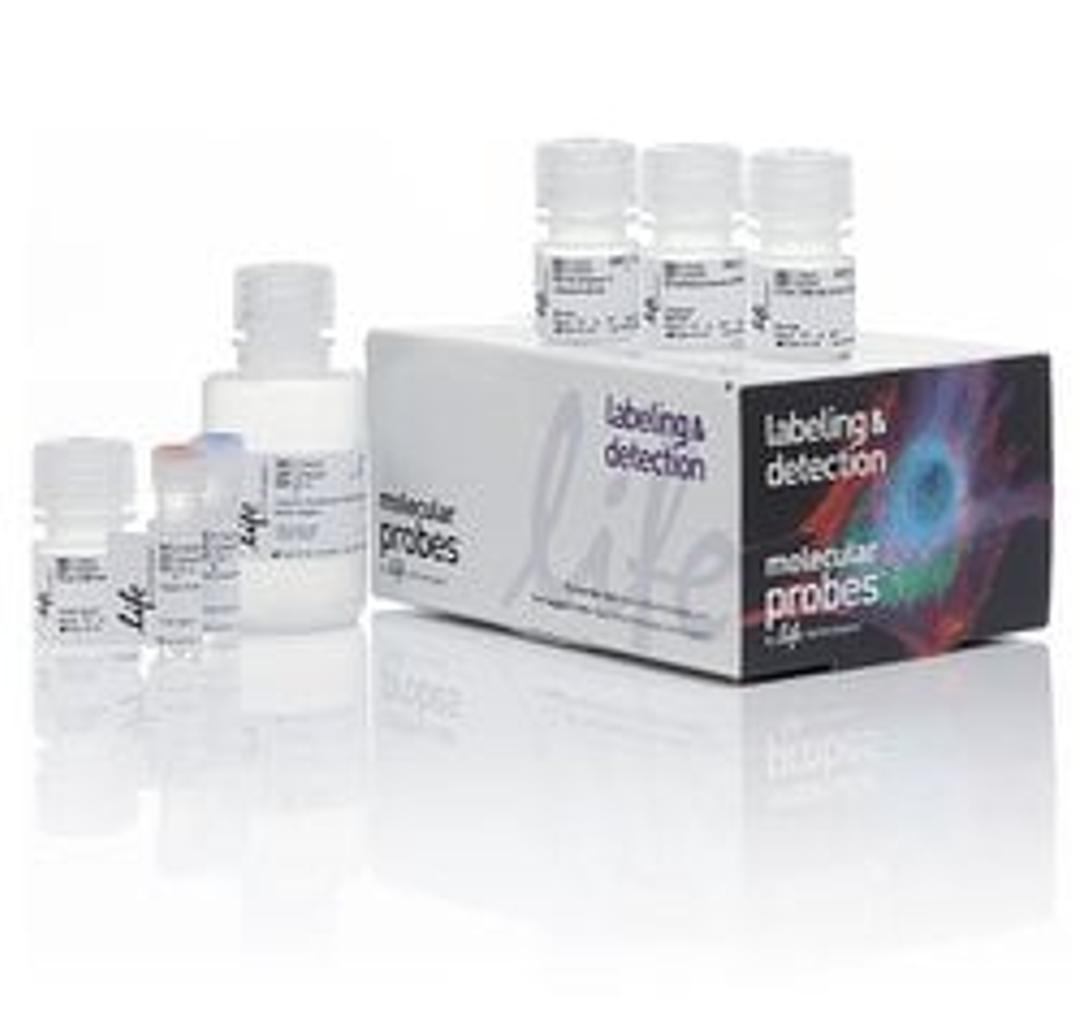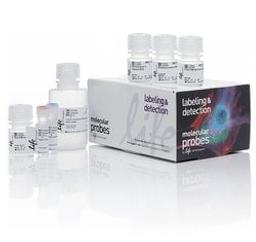Invitrogen™ Click-iT™ Plus EdU Pacific Blue Flow Cytometry Assay Kit
The Click-iT Plus EdU Pacific Blue Flow Cytometry Assay Kit provides a simplified, more robust assay for analyzing DNA replication in proliferating cells as compared to traditional BrdU methods. The Click-iT EdU Flow Cytometry Assay Kits rely on EdU (5-ethynyl-2´-deoxyuridine), a thymidine analog which is incorporated into DNA during active DNA synthesis, which is then detected using click chemistry, a copper catalyzed covalen…

The supplier does not provide quotations for this product through SelectScience. You can search for similar products in our Product Directory.
The Click-iT Plus EdU Pacific Blue Flow Cytometry Assay Kit provides a simplified, more robust assay for analyzing DNA replication in proliferating cells as compared to traditional BrdU methods. The Click-iT EdU Flow Cytometry Assay Kits rely on EdU (5-ethynyl-2´-deoxyuridine), a thymidine analog which is incorporated into DNA during active DNA synthesis, which is then detected using click chemistry, a copper catalyzed covalent reaction between an azide and an alkyne. In this application, the alkyne is found in the ethynyl moiety of EdU, while the azide is coupled to Pacific Blue dyes. Standard flow cytometry methods are used for determining the percentage of S-phase cells in the population. For this kit, newly synthesized DNA is analyzed using the 405 nm laser of the flow cytometer. The Click-iT Plus formulation is compatible with standard fluorophores, including R-PE and R-PE tandems, as well as fluorescent proteins.
Features
- Accurate--superior results compared to BrdU Assays
- Fast--results in as little as 90 minutes
- Economical--more assays per kit
The Click-iT Plus EdU label is performed using much milder conditions than traditional BrdU assays. The EdU assay conditions are also compatible with cell cycle dyes and multiplexing using antibodies against surface and cellular markers.


















